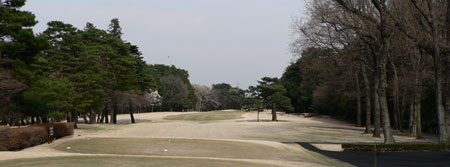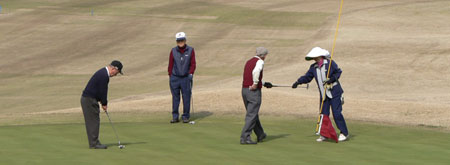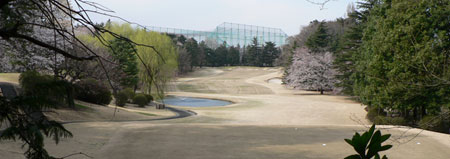Thursday saw the Nikkei close at its highest level in over 5 years, indicating that after numerous false starts the Japanese economy is now fairly racing down the road to recovery. But along with the Nikkei and rising land prices proving that Japan’s battered economy is on the mend, another reliable gauge is rather surprisingly golf — or more accurately the sport’s fluctuating club membership fees.

While the game of golf itself is no different in Japan, the leisurely sport has had a few teaks here and there, giving it a very different feel — both physically and financially. To begin with, playing 18 holes from start to finish is simply not possible, as regardless of what time you tee-off, it’s 9 holes followed by lunch and a few drinks. Then with a heavy stomach and a considerably lighter head, it’s out on the course again to finish off the round. Yet any club choice or shot confusion brought about by lunchtime excesses will be gently eased by the wise words of your ‘caddie-san’, a middle-aged lady wearing unusual headgear who will clean your balls, wipe your shaft, and offer words of advice and encouragement during your trials and tribulations. All for a modest fee of course.

However, it’s the aforementioned membership fees that really separate the Japanese game from its international cousins, and as mentioned prior to the digression, they are a good indicator of economic health. Mirroring the rise of land prices, the average membership cost of around 300 courses in the east of the country used to be 2.7 million yen (13,000 pound), but since November that has jumped considerably to a rather more hefty 3.5 million (17,000 pound).
These prices though are at the cheaper end of things, and it’s at the middle and high ranking clubs that a bigger increase has taken place; retiring baby boomers causing costs to more than double from their post-bubble lows. The Tokyo Yomiuri Country Club is a prime example of this trend, as after membership bottomed out at a not exactly insubstantial 18 million yen (87,000 pound) in 2003, it now stands at a mind boggling 43 million (210,000 pound).
Yet even such figures pale into insignificance when compared to the Koganei Country Club — where incidentally the accompanying pictures were taken, although sadly surreptitiously and not during a round. This most exclusive of courses in western Tokyo being the leading barometer when it comes to the overall market, and during the bubble its membership soared to a truly astronomical 450 million yen (2 million pound), not surprisingly making it the most expensive club in Japan. Now, although times have obviously changed, ensconcing oneself in the plush Koganei clubhouse will still currently cost a cool 65 million yen (317,000 pound). A figure that despite its almost other-worldly qualities looks set to continue rising, with analysts keeping a close eye on its movements.

While almost everyone else looks on in open-mouthed disbelief.
Joseph J. Finn says
Were these pictures taken during a drought?
Dogging says
I guess it certainly keeps the riff raff out!!
Lee says
Nah Joseph, I took the pictures the same day I posted the story. As it’s very dry in the winter, most golf courses seem to end up that colour. Come rainy season though, they should begin to get some colour back.
Joseph J. Finn says
Gotcha, thanks.
Newell Dorsey says
My how time changes eerything. I have photos of the course when Joe Lewis, Tony Liema, Loyd Mangraham and Dow Finsterwald played the course in December 1951 or January 1952.